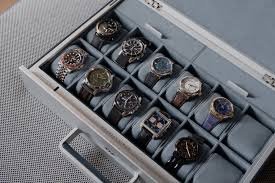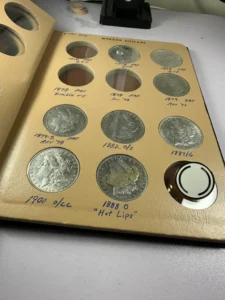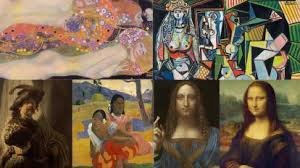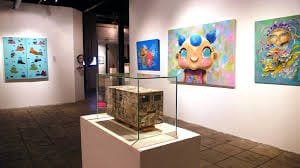In today’s fast-paced, digitally dominated world, the concept of “legacy” is often reduced to a paper trail of stocks, digital assets, and real estate portfolios. But for centuries—and still today—true legacy has also been written in gold, preserved in sapphire, timed in Swiss precision, and held in the mystique of rare objects passed down through generations. Jewelry, luxury watches, and rare collectibles aren’t just beautiful, they’re vehicles of memory, meaning, and long-term value.
In the United States and around the world, high-net-worth individuals and thoughtful collectors are increasingly turning toward tangible treasures to tell their stories and build enduring wealth that’s felt, seen, and inherited. These heirlooms serve as financial security, cultural markers, and emotional anchors. From a grandmother’s engagement ring to a collector’s limited-edition Rolex or a 19th-century Fabergé egg, these items connect the past, present, and future in ways a digital wallet never could.
This article explores how you can build a lasting legacy through jewelry, watches, and rare items. We’ll examine the cultural, financial, and emotional power of collecting, look at key considerations for investing in luxury items, and share real-world stories of legacy built one piece at a time.
Why Jewelry, Watches, and Rare Items Matter in Legacy Building
1. Tangible Heritage with Sentimental Value
Unlike stocks or crypto, which are intangible and abstract, fine jewelry and watches carry personal significance. A diamond ring can symbolize enduring love. A vintage Patek Philippe may recall a pivotal promotion. A signed art piece can reflect a person’s aesthetic or political worldview. These objects sometimes speak louder than numbers about who we are and what we cherish.
Legacy isn’t just about what you leave behind, but how you’re remembered. These pieces become stories frozen in time, embodying love, triumph, tradition, and memory.
2. Intergenerational Wealth and Continuity
In the U.S., the transfer of wealth across generations is increasing, with trillions expected to be passed down in the next two decades. Heirloom-quality jewelry and timepieces are not only valuable assets but also meaningful symbols of familial continuity.
Passing on a Cartier bracelet or Omega Speedmaster isn’t just giving a gift, it’s handing over a legacy of style, taste, and history.
3. Portfolio Diversification and Inflation Hedging
Luxury items often appreciate over time, especially when sourced with care and preserved properly. Unlike fiat currency, which is susceptible to inflation, high-end jewelry and rare collectibles can serve as stores of value and even outperform traditional investments in turbulent markets.
For instance, rare colored diamonds and Swiss watches have consistently shown long-term value stability, making them appealing to both investors and legacy-minded individuals.
Key Impacts of Building a Legacy with Luxury and Rarity
1. Cultural and Historical Significance
Items like vintage jewelry, signed artworks, and rare coins tell a cultural story. Owning or passing down these pieces often means preserving history, whether it’s a locket from the 1800s or a limited-edition timepiece marking a monumental event.
Real-world example:
In 2017, a family in Texas discovered a ruby and diamond brooch in their grandmother’s belongings. Upon appraisal, it was revealed to be a Van Cleef & Arpels piece from the 1950s, valued at over $200,000. The family decided to loan it to a museum exhibit on mid-century fashion, simultaneously preserving their grandmother’s story and contributing to American design history.
2. Emotional Connection and Family Identity
A watch engraved with a grandfather’s initials or a locket containing a wedding photo becomes a spiritual and emotional compass. These items allow descendants to feel connected to people they never met.
Families who prioritize these traditions often develop a strong sense of identity and belonging that endures across generations.
3. Empowering Women and Future Generations
Jewelry, in particular, has long been used to empower women economically and emotionally. In many cultures, gold jewelry forms part of a woman’s financial security. In modern America, women are reclaiming this practice—choosing, buying, and bequeathing luxury pieces that represent autonomy, love, and vision.
Real-world example:
Serena, a first-generation business owner in California, started buying herself a piece of fine jewelry for every professional milestone. She now owns over 20 investment-grade pieces, each with a handwritten story attached. Her daughter will inherit not only the jewelry but also the personal journey they represent.
4. Exclusive Markets and Status Symbolism
Luxury watches and rare items often come with access. Limited-edition releases from Rolex, Audemars Piguet, or Hermès are sometimes more than fashion—they’re tickets to elite social circles, exclusive auctions, or investment portfolios only a few can enter.
Building a collection isn’t just about passion—it can create networking and investment opportunities in elite circles, enhancing both financial and social capital.
Real-World Examples of Legacy Building Through Rare Items
1. Paul Newman’s Rolex Daytona
Perhaps the most iconic story in recent watch history, Paul Newman’s personal Rolex Daytona sold for $17.8 million at auction in 2017. The value wasn’t only in the watch’s rarity, but in the legend that wore it. Newman wore it daily, making it part of both pop culture and watch history.
It became a legacy piece—part family heirloom, part cultural icon, part investment.
2. Elizabeth Taylor’s Jewelry Legacy
Elizabeth Taylor’s jewelry collection—featuring historic pieces from Bulgari, Cartier, and Harry Winston—was auctioned for over $116 million. Each piece held a story, from her love affairs to her travels. The auction wasn’t just a sale; it was a preservation of 20th-century celebrity culture and feminine luxury.
Her legacy continues to inspire collectors, historians, and style icons around the globe.
3. The World’s Most Valuable Stamp
In 2014, the British Guiana 1c Magenta stamp sold for nearly $9.5 million. It was just a stamp, yet it made headlines worldwide. Why? Because rarity and narrative elevate value. The story of how it was found and preserved made it a legacy collector’s dream.
How to Start Building Your Legacy Collection
1. Educate Yourself on Value and Authenticity
Work with certified appraisers, jewelers, and auction houses. Learn about gemstone grading, hallmark stamps, limited editions, and the history of the brands you admire. Provenance is key.
2. Start Small but Think Long-Term
You don’t need millions to begin. A well-sourced vintage brooch or an affordable mechanical watch from a respected brand can grow in value. The goal is consistency and purpose, not quantity.
3. Maintain and Protect Your Collection
Store your items in safe deposit boxes or home safes with climate control. Get insurance. Have them cleaned, restored, or serviced regularly. Document every piece: origin, cost, value increase, emotional significance.
4. Tell the Stories Behind the Pieces
What makes a legacy truly last is the narrative. Include written notes, photos, and videos explaining what the item meant to you and why you acquired it. This turns objects into history.
5. Involve the Next Generation
Don’t just leave these items behind; introduce your children or heirs to the collection early. Explain what each item means, how it fits into the family legacy, and why it matters.
Luxury and Legacy in the Digital Age
With the rise of blockchain and NFTs, even the rare items market is evolving. Provenance tracking, authentication, and resale have entered a new digital phase. However, nothing replaces the weight of a real diamond, the tick of a luxury watch, or the texture of an oil painting.
You can now combine the old and the new. Store digital records on blockchain, but keep the tangible assets alive through wear, care, and storytelling.
Conclusion: What You Leave Should Speak for Who You Were
In an age where digital files can disappear with a click and online memories are often fleeting, the permanence of fine jewelry, luxury watches, and rare items becomes deeply meaningful. These treasures carry stories, culture, and investment value. They are bridges between generations and anchors of identity.
Building a legacy isn’t just about what you earned, it’s about what you loved, preserved, and passed down. By curating meaningful, valuable objects and sharing their stories, you ensure that your essence endures through time, through hands, and through hearts.
So the next time you consider what kind of legacy you want to leave behind, think beyond bank accounts. Think diamonds. Think Swiss. Think stories.






